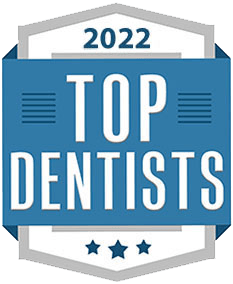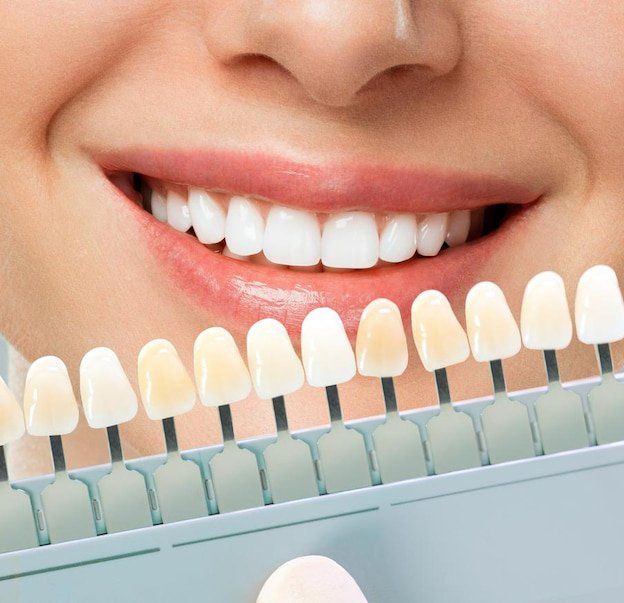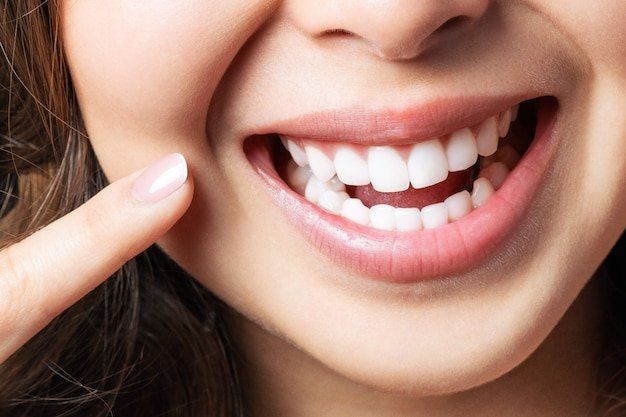Proud to announce our new Location in Ridgefield, CT!
Preventive Dentistry Westport and Ridgefield, CT
Overview Of Preventive Dentistry Westport and Ridgefield, CT
They say an ounce of prevention is worth a pound of a cure, and this is especially true for preventive dentistry. Maintaining good habits starting with brushing your teeth, flossing your teeth, and eating a well-balanced diet with vitamins and minerals (and staying away from sugary or acidic foods and drinks) can prevent unnecessary emergency visits to your Westport Dentist. Here are two habits that you should start right away:
- Teeth brushing: Brushing your teeth rids your mouth of the daily residue and plaque that accumulate from the food and drink you consume, especially starches and sugars that can build up bacteria over time. Brushing your teeth gently also helps massage your gums and gives your teeth a firm foundation to chew and bite. Visit our Dental Videos section to learn how to correctly brush your teeth.
- Teeth flossing: Flossing helps rid your teeth of particles of food wedged between the teeth which can accumulate bacteria or infection in the gums. They also help scrape off residue or plaque from the teeth themselves to complement your teeth brushing. Wondering how to floss correctly? Visit our Dental Videos section to learn how to correctly floss your teeth.
Why Preventive Dentistry Is Important
- Preventive dentistry at our Westport and Ridgefield CT dental offices is important because it protects against further tooth-saving procedures. Time-intensive procedures like root canal treatments, dental implants, or dentures can be necessary to save your tooth and help you eat, chew, and smile, however, they can be avoided with some prevention. Here at Distinctive Dental Service we focus on preventing tooth decay and offer these procedures at our Preventive Dentistry offices in Westport and Ridgefield CT:
- Dental Sealants: To prevent a cracked or damaged tooth from decaying or cracking further and causing a need for major surgery like a root canal or dental implant, your preventive dentist in Westport and Ridgefield, CT can apply dental sealants. Dental sealants are thin layers of resin to seal up any cracks or fissures to prevent it from further decay and reinforce the natural strength of the tooth so you can chew and bite without risking further damage. They are one of the most effective treatments for preventing tooth decay and reducing your probability of developing cavities.
- Dental Checkups/ Cleanings: Scheduling a checkup with your Preventive Dentist in Westport and Ridgefield, CT can significantly increase your chances of good oral health. At our office, the dentist and hygienist will examine your mouth and look for any sores, signs of gum disease, cavities, or problem areas. They will then brush and floss your teeth properly and scrape away any hardened plaque which had been missed with day-to-day brushing. If problem areas are detected they may also recommend x-rays or further screenings.
- Fluoride and Decay Prevention: Fluoride absorbed by the body can increase the strength of the enamel and prevent tooth decay. Treatment with your Preventive Dentist in Westport CT can increase the hardness of your teeth with fluoride while you supplement with fluoride toothpaste, mouthwash, or fluoridated water.
How We Are Different For Preventive Dentistry At Distinctive Dental Service
At our preventive dental care office in Westport and Ridgefield, CT, we are different because we focus on protecting your teeth first before it decays into a more severe situation requiring surgery or an invasive dental procedure. This is the reason we recommend preventive care first and teach all of our patients the importance of maintaining a healthy brushing, flossing, and diet regimen to enjoy their teeth for a long time.
Start your Preventive Dentistry journey today by calling our offices in Westport and Ridgefield CT!
Peridontal Therapy
Using periodontal therapy, dentists can help reduce the risks of health problems.
Did you know that regular dental visits can also help you keep track of non-dental diseases? For example, dentists can help their patients identify conditions like diabetes. This can be beneficial to a lot of people, as many aren’t aware that they have existing conditions.
Aside from diabetes, dentists can also detect infections outside of the mouth. They can even find signs of osteoporosis in their patients! They can do all these through a thorough evaluation of their patients’ teeth and gums.
Using periodontal therapy, dentists can help reduce the risks of health problems.
But what exactly is this therapy for, though, and how can it benefit both oral and overall health? What does the treatment entail, and is there pain involved? We’ll answer all these questions below, so be sure to keep reading!
What is periodontal therapy?
Periodontal therapy is a type of conservative or non-surgical treatment for gum disease. Its goal is to control and manage periodontal diseases without the need for surgery. Ultimately, it helps restore optimal gum health, which, in turn, helps keep tooth loss at bay.
Who is it best suited for?
Periodontal therapy is often the first line of treatment for slight periodontitis. It’s at this stage of gum disease wherein a patient has at least one tooth with 3 mm of gum attachment loss. About 9% of people with periodontal disease are at this stage.
Periodontal therapy can also help with gingivitis. Gingivitis is different from periodontitis, as it’s only an inflammation of the gums. However, untreated gingivitis can progress into periodontal disease.
Researchers found that periodontal therapy is also effective for moderate chronic periodontitis. This is the most common stage among US adults with periodontal disease. This presents patients with a non-surgical treatment option for their gum condition.
How it all starts
In most cases, dentists can diagnose periodontitis through an in-depth physical examination. A periodontal probe helps them determine if there’s any loss of gum attachment. If there is, this tool also lets them measure the size or degree of the lost gums.
Your dentist can also use an intraoral camera to show you the inside of your mouth. This can help you see for yourself the state of your teeth and gums. Your dentist can also use this as an opportunity to point out areas of improvement.
If the initial test reveals signs of gum disease, your dentist may take digital x-rays. These radiographs are capable of taking almost instantaneous digital images of your mouth. This then allows the dentist to come up with a quicker, more accurate diagnosis.
The Treatment Procedures Involved
All periodontal therapies begin with a professional dental cleaning. This is the same kind of cleaning that your dentist gives you during your routine dental visits. This helps get rid of the first layer of plaque and tartar (hardened plaque) on the teeth. After this comes the specialized treatments for active periodontal disease.
Scaling
Plaque and tartar can build up on the surfaces of the teeth below the gumline. This accumulation occurs as the gums recede (move away) from the teeth. Note that in receded gums, pockets form, and they allow plaque and bacteria to enter.
Scaling, also known as “deep cleaning,” eliminates these hidden build-ups. Your dentist can use hand tools or ultrasonic cleaners to remove plaque and tartar. Ultrasonic cleaning devices allow for the faster breakdown of hardened dental calculus.
Root Planing
Root planing involves smoothing out rough spots that affect the tooth root. By removing the roughened areas, the dentist can get rid of bacteria hiding in these crevices. In addition, this ensures that the gums have a clean surface to reattach to.
With the combination of scaling and root planing, the gums can begin their recovery. Depending on the amount of plaque and tartar, these two procedures may take one to two visits.
Medications
In many cases, dentists may also use medications like antibiotic gels as part of the therapy. These meds help reduce bacterial counts in the mouth. They can also help ease the swollen gums, which in turn, shrinks periodontal pockets.
If the gel will help in your treatment, your dentist will apply it after scaling and planing. This will go in between the treatment pockets.
Your dentist may also prescribe an antimicrobial mouth rinse that you can use at home. As medicated rinses, they contain an active ingredient that combats bacteria. They can help prevent more bacterial infections, especially in newly treated gums.
Do periodontal therapy procedures hurt?
Before the procedures, your dentist will use a numbing agent on the gums and tooth roots. The local anesthesia is quick-acting and will help you feel numb during the treatment. For patients who have a low pain threshold, scaling or planing may cause slight discomfort.
After the therapy session, the treated area may continue to feel numb for an hour or two. You may start to feel some discomfort or slight tenderness once the anesthesia wears off. In most cases, these unpleasant sensations go away after a day or two.
If you have worries about the pain, don’t hesitate to let your dentist know before the procedure. The doctor may provide you with other sedation options. Your dentist may also prescribe you pain relievers to help at home, while your gums heal.
At-Home Aftercare Tips
After the periodontal therapy, you can resume your optimal oral health routine. This includes flossing and then brushing for at least two minutes after every meal. Dining on meals packed with immune boosters like fruits and veggies can also help your gums heal.
If your dentist prescribes antibiotics, please take care to complete the prescription. This helps reduce the odds of bacteria developing medication resistance. It’s also a good idea to see your dentist more frequently than the routine twice-a-year visits. This way, your oral healthcare provider can better monitor the state of your teeth and gums.
Getting Back Your Healthy Pink Gums
Prompt periodontal therapy can help your gums get back to being healthy. In the long run, this means that you also get to keep your pearly whites safe, secure, and in place, and it will help your jawbone stay healthy and strong.
Moreover, early gum disease treatment can keep chronic inflammation at bay. This, in turn, helps lower your risks of developing other, more serious, health problems.
Ready to make your gums healthy, pink, and inflammation-free? Then please know that our dental team is here to help. Don’t hesitate to get in touch with us if you have any questions about periodontal treatments!
Book Your Appointment Below
Call Now or Request Your Appointment Today!
Want a Healthy Beautiful Smile?
Cosmetic Dentistry
Learn MorePreventative Dentistry
Learn MoreOne Visit Porcelain Crowns
Learn MoreDental Implant
Learn More
Our number one priority is our patients’ well-being. If you are looking for a great family dentist in Westport, Ridgefield and surrounding towns, call us today
Our number one priority is our patients’ well-being. If you are looking for a great family dentist in Westport and Fairfield, call us today!

Visit one of our two offices!
All Rights Reserved | Distinctive Dental





